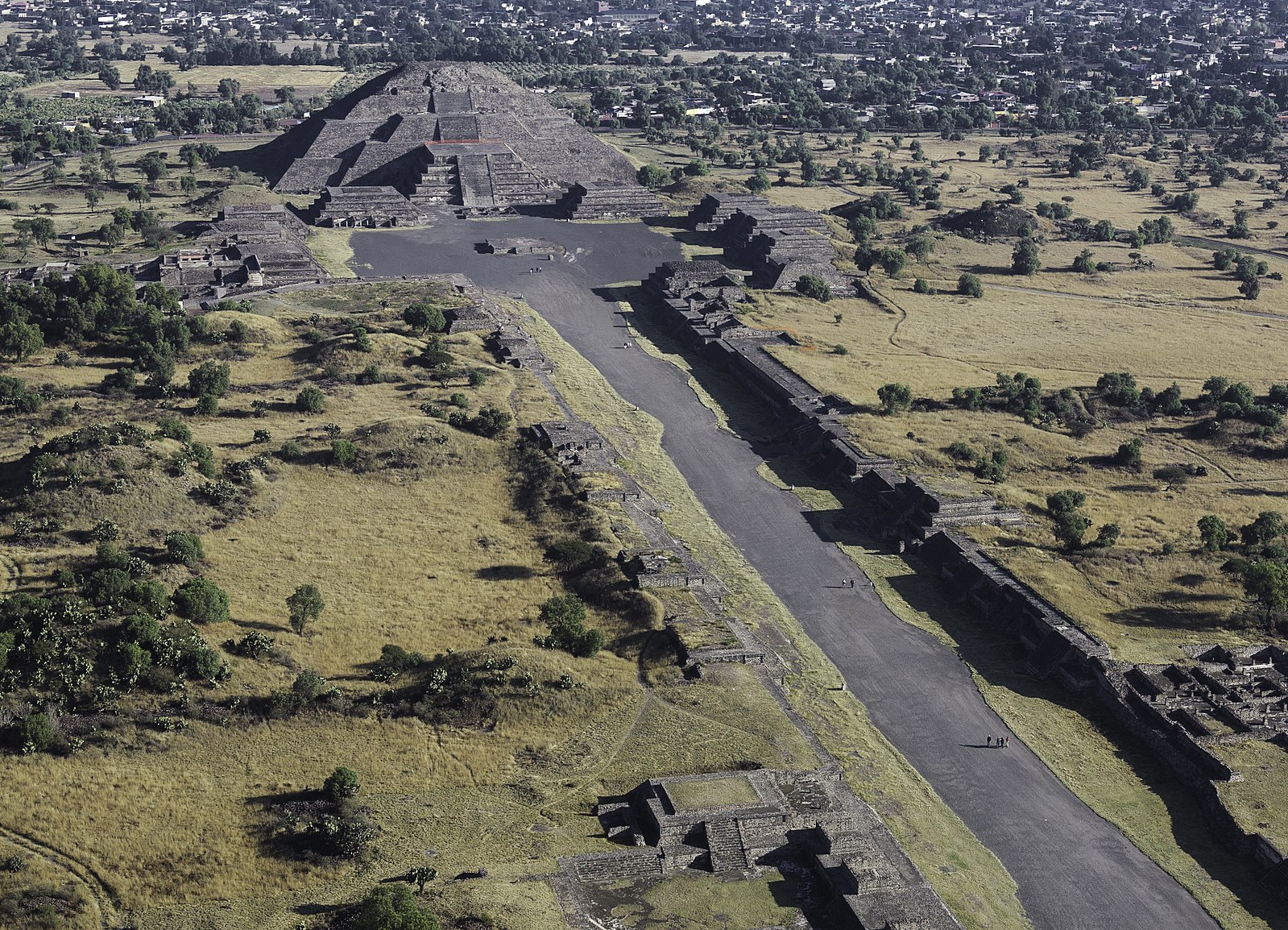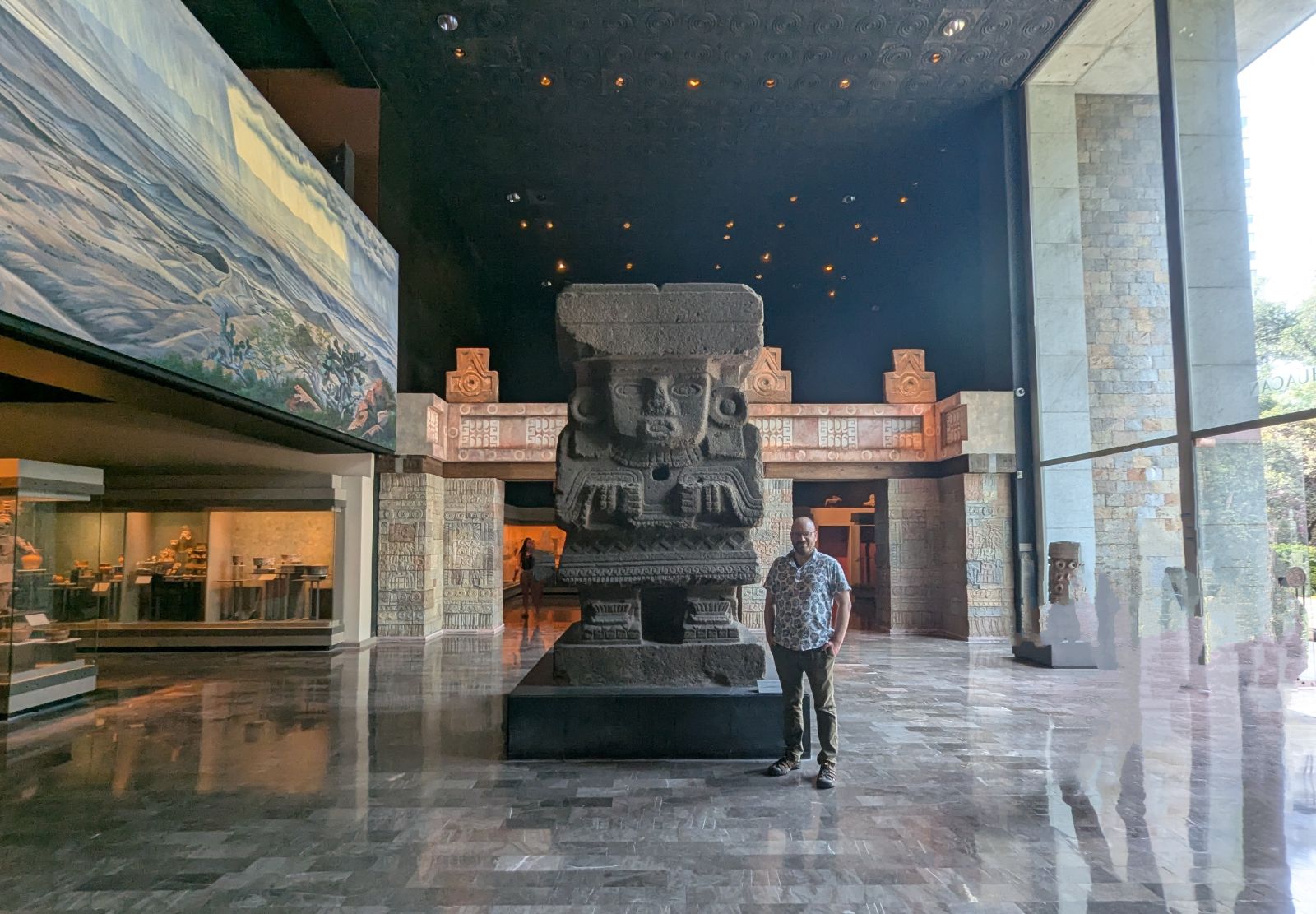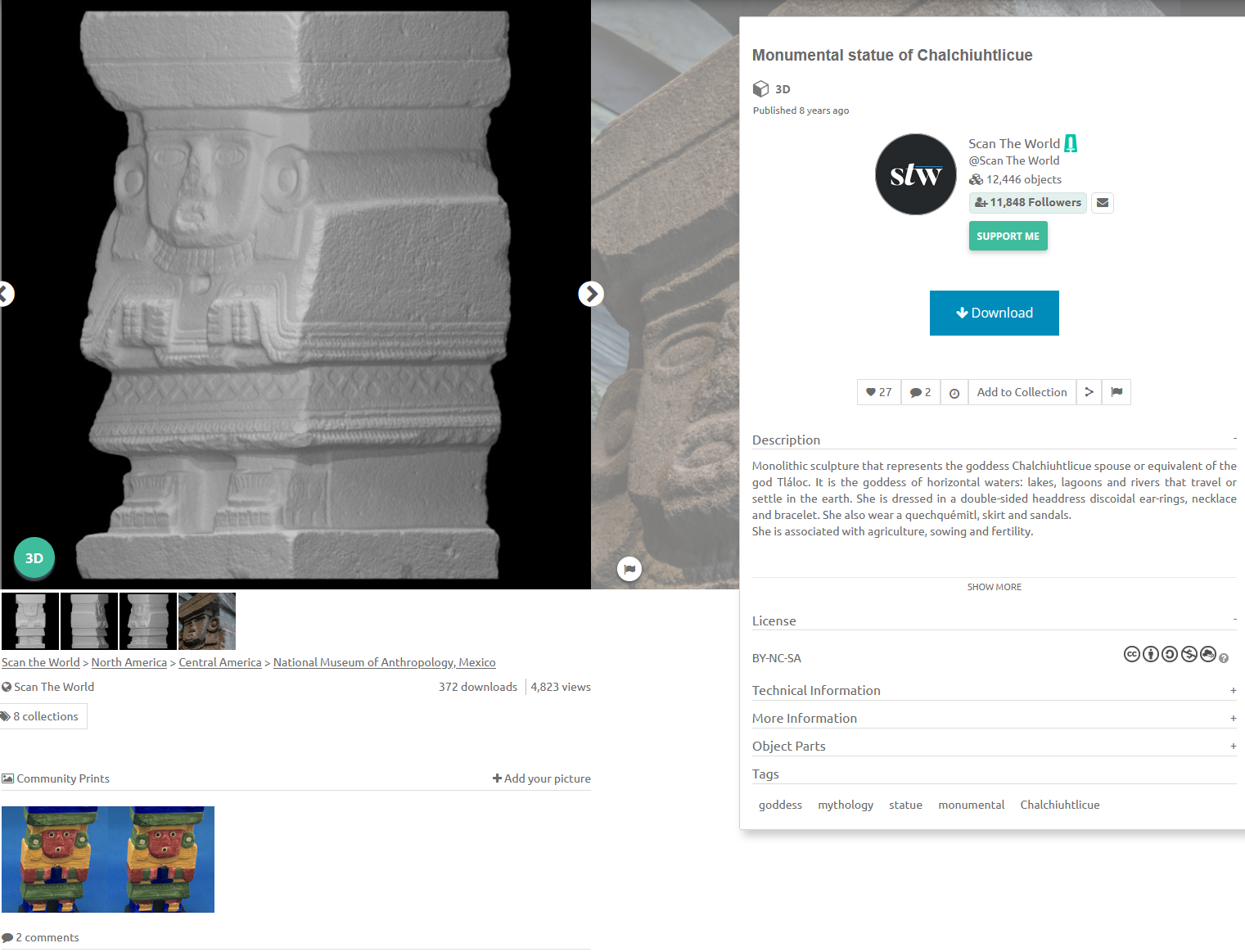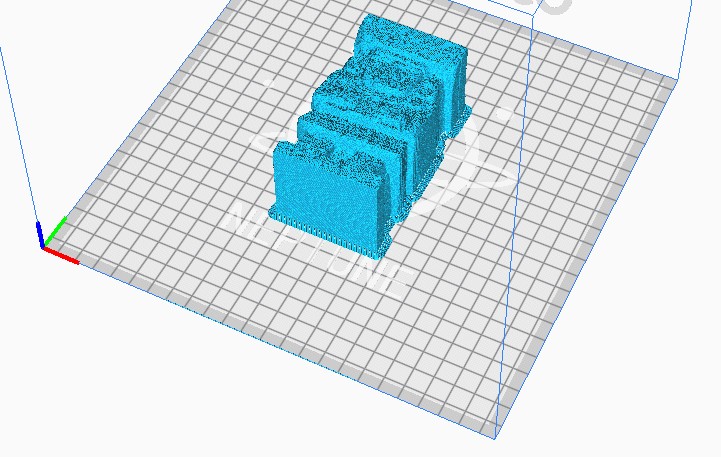Chalchiuhtlicue
We wondered about how 3D printing an object might affect our sense of its materiality. In particular, the size of the 3D model might reveal or obscure something about the original artifact. As we browsed available 3D model files, one of them stood out as an excellent illustration of this dynamic: a model made from a 3D scan of the statue of Chalchiuhtlicue from the Teotihuacán civilization.
On the Scan the World repository, we found a printable 3D model, in STL format, for this statue. The 3D model of this object adds to its journey from the period Teotihuacán’s flourshing in the early centuries of the first millennium to its current day placement at the center of a large gallery at the National Anthropology Museum in Mexico City.
When holding our palm-sized model of this giant statue, consider the ways that people have related to its materiality over the centuries.
The Carving, ca. 250 CE

The Teotihuacán civilization flourished from 100 CE to ca. 700 CE. During these centuries, a thriving metropolis and hinterland provided the resources needed to construct a vast temple complex within the city. At some point during the civilization’s height, artists carved this giant statue. The statue depicts the goddess of water and fertility, Chalchiuhtlicue. The statue stands at more than twenty feet tall with each side five and a half feet wide.
The Excavation, ca.1883-1884
After the Teotihuacán civilization declined, centuries passed and vegetation eventually covered the abandoned metropolis. In 1883, the French archaeologist Claude-Joseph Désiré Charnay led an expedition to the remains of Teotihuacán. The prolific American photographer William Henry Jackson documented the archaeological work. Jackson took the first photograph of the statue of Chalchiuhtlicue, buried in centuries of soil and rubble.
](images/charnay-1.jpg)
The archaeologists in Charnay’s expedition cleared the rubble from the statue. It was eventually transported it to a museum in Mexico City.
Current Location at the National Anthropology Museum
Today, the imposing statue of Chalchiuhtlicue stands at the center of the Teotihuacán gallery at the National Anthropology Museum in Mexico City.

The 3D Model
Scan the World offers one of the largest repositories of printable 3D models. The technology for capturing large objects relies on depth-scanning capabilities such as LiDAR or infrared. While it is easy today to create a 3D image with phone apps such as Reality Scan, those apps cannot generate usable files for 3D printing. Therefore, Scan the World provides an invaluable opporunity for those interested in printing objects related to cultural heritage.

We downloaded the 3D model, in STL file format, from Scan the World and then sliced it. After about three hours, we had the printed object ready to display.
